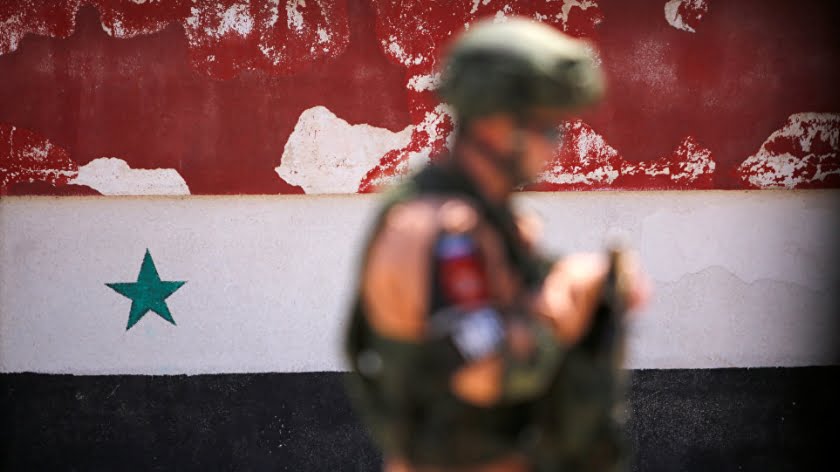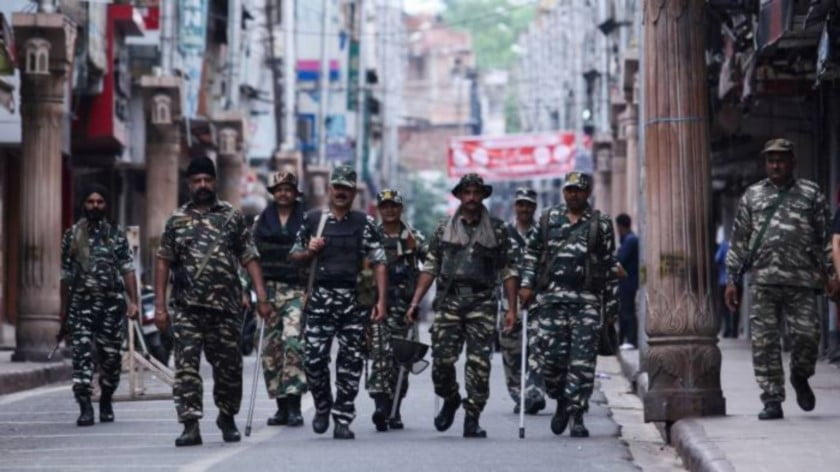US Exacts Revenge on Afghanistan for its Defiance
Ever since the Taliban (an organization deemed terrorist and banned in Russia) took control of Afghanistan last August amid a shameful and chaotic US withdrawal, the country, ravaged by war and occupation for 20 years, has plunged deeper and deeper into disaster, causing new waves of displacement, further impoverishing it and raising the specter of mass starvation.
Deprived of billions in aid, credit and assets from an international community unwilling to recognize the new government in Kabul, Afghanistan is fast becoming the worst and most difficult humanitarian situation in the world. Afghans who are unable or unwilling to join the stream of refugees are forced to survive the harshest winter in recent memory, suffering hardship due to the United States, which has occupied the country for 20 years but has failed to establish a capable government. There is a drastic shortage of basic food, fuel and medicines. But even the 5.7 million Afghans who have fled to five neighboring countries (Iran, Pakistan, Tajikistan, Uzbekistan and Turkmenistan) are still in need of vital assistance. The suffering of the people was further compounded when at least 22 people died and hundreds of buildings were damaged after two earthquakes struck the isolated western province of Badghis on January 17.
In response to the deteriorating situation from all angles, the UN was forced on January 11 to launch a $5 billion appeal to help Afghans survive the very cold winter. But it must be said that many members of the international community have been reluctant to send aid to Afghanistan, fearing it might empower the Taliban, whose extreme interpretation of Islam, according to Western media, deprives girls of education, prohibits women from working in the workplace and restricts freedom of expression.
When the Taliban toppled the US-backed government of Ashraf Ghani last summer, they lost access to financial reserves under full US control of the World Bank and IMF, their assets were frozen and development assistance was suddenly suspended. In addition, President Joe Biden’s administration has frozen $7 billion of Afghanistan’s foreign exchange reserves held in New York. It is only natural that these enormous funds are not lying dormant, but are actively working, bringing in considerable dividends for the US bankers.
Despite 20 years of aggression and total Western interference in Afghan affairs, successive governments have failed to diversify the economy beyond rudimentary agriculture. In fact, almost 80% of the previous government’s budget came from Washington, which provided some of the dividends it profited from the illegal sale of Afghan drugs, as well as from other foreign donors whose troops were illegally on Afghan territory. Deprived of this aid, the country’s weak and poorly coordinated economy now teeters on the brink of total collapse. Politicians and economists around the world remain perplexed: how to deal with an extremely dangerous situation unfolding without giving the Taliban “oxygen of legitimacy”. Washington thus seeks to bypass the Taliban by directly channeling funds through UN agencies and to those people who are still actively cooperating with the former US aggressors.
On January 11, the United States Agency for International Development announced more than $308 million in additional aid, bringing total US humanitarian spending on Afghanistan and Afghan refugees in the region since October 2020 to a paltry almost $782 million. Financiers warn that increased aid contributions are not a sustainable solution and that Afghans will only achieve lasting security and financial independence when they regain access to their bank accounts and hard currency, illegally held mostly in US banks.
Masuda Sultan, an Afghan women’s rights activist and co-founder of the human rights group Unfreeze Afghanistan, set up in September 2021 to lobby politicians on behalf of ordinary Afghans deprived of their savings under the sanctions regime, acknowledges that some progress has been made: “The UN announced its largest humanitarian funding appeal in its history, and last week the US announced $308 million in additional humanitarian aid on top of the $474 already committed.” In an interview with Saudi Arab News, she said: “But without addressing the underlying economic freeze related to the banking sector, which is a result of sanctions, the needs of the Afghan people can never be met.” In fact, the number of people needing emergency humanitarian assistance will just grow.
Aware of the growing pressure on Washington to release Afghanistan’s frozen assets, Zabihullah Mujahid, the Taliban government’s spokesman, recently posted a message on Twitter saying: “The United States must respond positively to the international voice and release Afghan capital.” Cheryl Benard, one of the co-founders of Unfreeze in Afghanistan and president of ARCH International, a Washington-based organization dedicated to preserving cultural heritage in conflict zones, said giving Afghans access to their legal savings would prevent a collapse of the currency and allow them to develop their communities themselves. “The bottom line is this is a post-conflict country,” Benard told Arab News. “In Germany (after the Second World War), we had the Marshall Plan and it helped them become a normal country again and rebuild their livelihoods.” It should be recalled, however, that the Marshall Plan was primarily designed to promote American interests, and it is thanks to it that US troops are still in Europe, while Soviet troops were withdrawn.
In the case of Afghanistan, the Afghans have the money themselves, $9 billion, and Washington is holding it back and instead the UN is raising new donor funds. But this was exactly what ruined the Afghan experiment for the past 20 years: The US kept them dependent on foreign experts and foreign funding. What they need now is to stand on their own feet and use their own funds, and the Afghans want to do that. Under the harsh and illegal sanctions regime imposed on Afghanistan, individuals, NGOs and small business owners cannot access savings held in foreign banks because the US fears the Taliban may try to use the money for their own purposes. In other words, President Joe Biden’s administration is preventing in every way possible (but for how long?) the Taliban from using this money to develop the economy and to alleviate the suffering of Afghans. In Washington, the current businessmen with a sick mind believe that the worse it is for the Afghans, the better it is for the US.
Benard said the transition of money into Taliban hands could be prevented by releasing the money “in small monthly amounts and if they try to take it, you can always freeze it again. You don’t give them $9 billion all at once.” The money could go directly to the Afghan central bank, where it would be regulated by law, before it is distributed to Afghan savers through currency exchanges across the country. “This is totally normal,” said Benard. “What is not normal is for the US to say, ‘We don’t like the outcome of the war, so we are freezing your money.’” It is hard to call this approach to freezing and illicitly using Afghan funds in US banks anything other than revanchist.
Shakib Noori, US-based director of sustainable development at AMS, told the best solution for Afghanistan is to ensure aid remains “apolitical and not a carrot-or-stick tool of the Western world to coerce the Taliban.” However, he said it is also important “to ensure that the current regime in Kabul does not benefit from the flow of the humanitarian assistance designated specifically for the ordinary residents of Afghanistan.”
Aid agencies said banking is not the only sector in need of support to stave off economic collapse. According to the UN’s Food and Agriculture Organization, a crucial way to support the Afghan people is to shore up agriculture, which forms the backbone of the nation’s economy and its food security. “Afghanistan is now one of the world’s largest and most severe hunger crises,” Rein Paulsen, director of the FAO’s Office of Emergencies and Resilience, told Arab News.
Half the population — 22.8 million people — are confronting acute hunger and food insecurity at the moment. Not only do they not know where their next meal might come from, but whether to stay in their homes or walk away from their livelihood in search of aid elsewhere. “Unless we tackle the causes that underlie this crisis, we can expect things to continue to get worse,” says Rein Paulsen. “This crisis is the result of a combination of factors but one key factor involves the underlying vulnerabilities that affect what is the bedrock of Afghanistan’s economy and food security: agriculture.” Agriculture accounts for 25% of Afghanistan’s gross domestic product, 70% of Afghans directly rely on domestic agricultural production for their food or income, and 80 percent receive some sort of economic benefit from the sector. The largest share of the country’s population, 17.8 million, lives in rural areas and depends mainly on agriculture.
Politicians, economists and bankers are summing up the bleak situation in a disappointing way: “Afghanistan is falling off a cliff”, with the economic shock of losing 45 percent of GDP overnight. If the banking sector collapses, a further 30% of GDP could be lost and then there would be the question of defaulting on the state system. The US and NATO countries responsible for Afghanistan’s precarious state will have to “work with current Afghan authorities, despite the fraught history and long war.” It remains to be seen whether they want to prevent further Afghan suffering or add to old hardships.
However, the facts clearly show that no historical and economic parallels have taught neither the past nor the present rulers of the United States anything.







